Laura Knight in 5 Paintings: Capturing the Quotidian
An official war artist and the first woman to be made a dame of the British Empire, Laura Knight reached the top of her profession with her...
Natalia Iacobelli 2 January 2025
Remedios Varo (1908-1963) was a 20th-century Surrealist painter. Born in Spain, she was forced to move to France and Mexico to escape the Spanish Civil War and World War II. However, it also gave her the opportunity to meet the Surrealists, such as Benjamin Péret and Leonora Carrington. One can never be sure what is happening in her paintings, there is always a sense of mystery. Her works are a window to a fantastical and enigmatic world full of magical creatures.
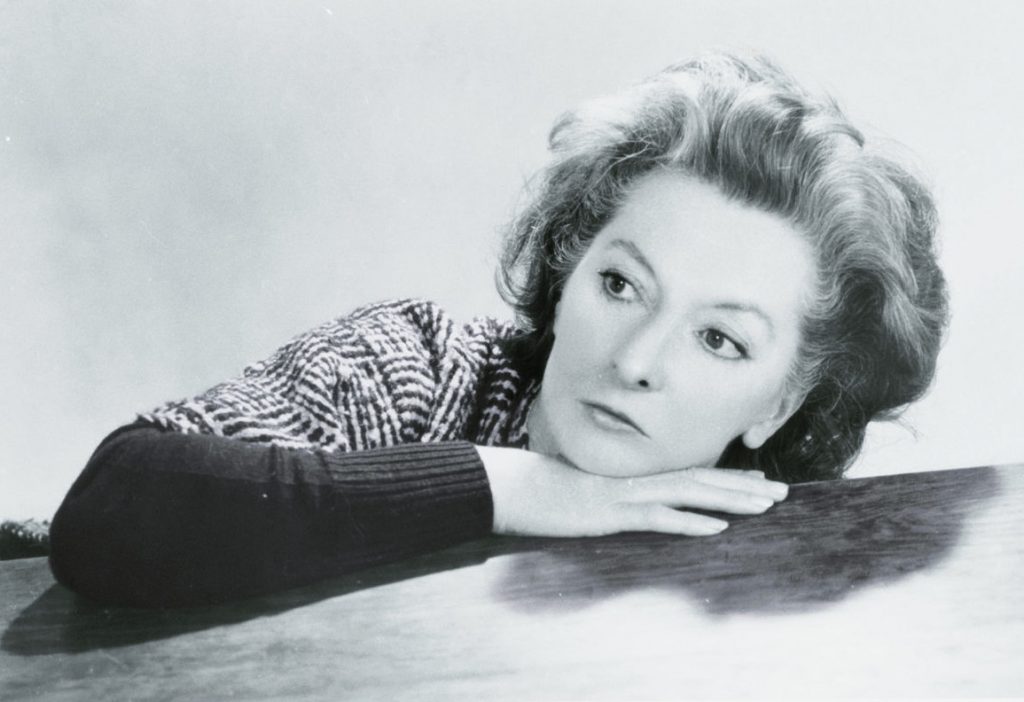
Portrait of Remedios Varo. Aware.
María de los Remedios Alicia Rodriga Varo y Uranga was born in the town of Anglès in Girona, Spain, in 1908. She was the daughter of an engineer who taught her how to draw from an early age. This influenced her later works as she focused a lot on drawing. Moreover, she read books by Alexandre Dumas, Jules Verne, and Edgar Allan Poe, which must have certainly sparked her imagination. As many artists begin, her first works were sketches of family members and self-portraits when she was only 15 years old. They are signed and dated and they show that she saw herself as an artist already back then.
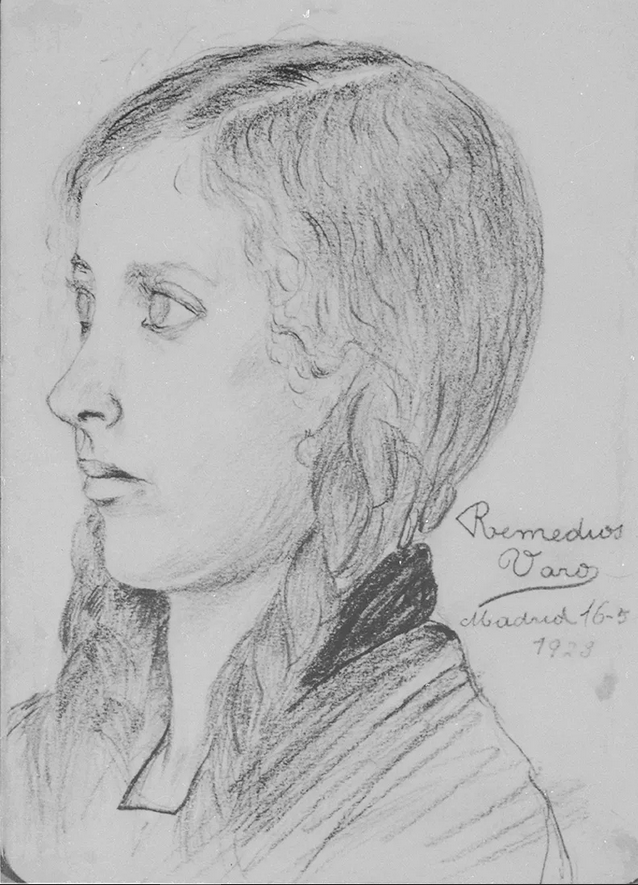
Remedios Varo, Portrait of Grandmother, 1923. Remedios-varo.com.
Although her mother was a very religious Catholic woman, Varo always rebelled against her Catholic education. Instead, she was interested in magic, occultism, alchemy, mythologies, and science. Later, she attended the School of Arts and Crafts and then the Royal Academy of Fine Arts in San Fernando in Madrid, Spain.
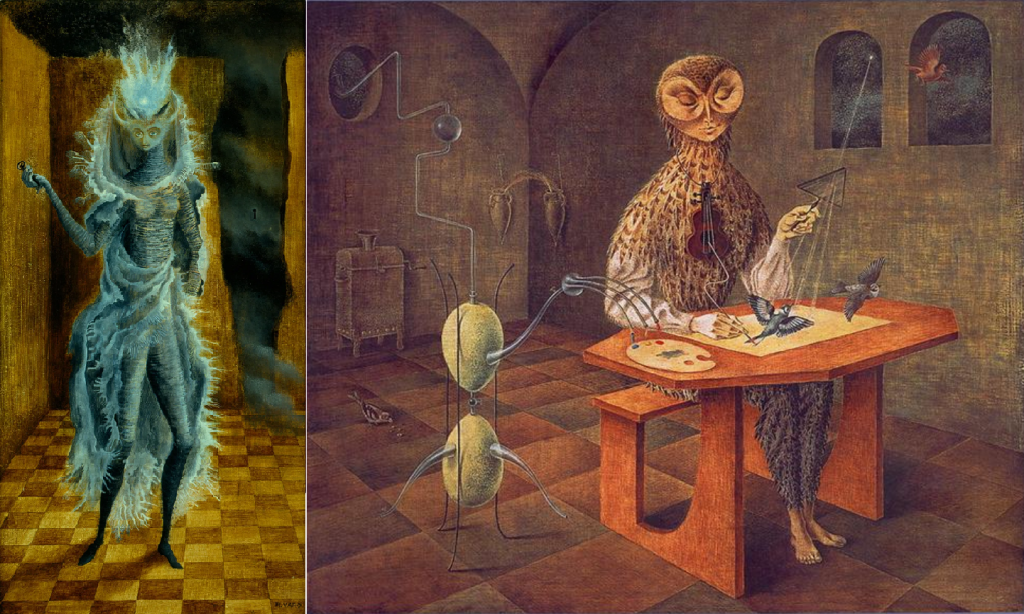
Left: Remedios Varo, The Minotaur, 1959. Remedios-varo.com; Right: Remedios Varo, Creation of the Birds, 1957, Museo de Arte Moderno, Mexico City, Mexico.
Although Varo’s career had a bigger impact in Mexico, the beginning of her career in Europe sheds light on her Surrealist style. First, she went to Paris in 1931 before returning to Barcelona. She also lived in Madrid where she visited Museo del Prado and saw Hieronymus Bosch’s The Garden of Earthly Delights. She also met Federico García Lorca, Salvador Dalí, and Luis Buñuel there, among other Surrealist artists. In 1930, she married an artist Gerardo Lizarraga, whom she later divorced.
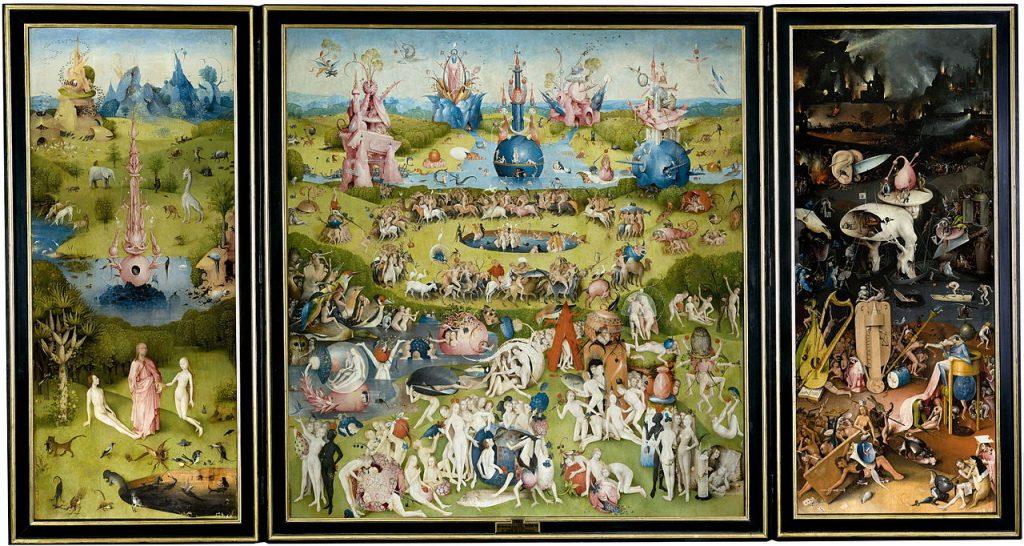
Hieronymus Bosch, The Garden of Earthly Delights, 1503–1515, Museo del Prado, Madrid, Spain.
Varo experimented with a variety of techniques and encouraged her friends to create works of art during games she organized. For example, she played cadavres exquis (exquisite corpses). Although the name of the game sounds quite morbid, it consisted of taking random pieces chosen by each player and putting them together to form a work of art. It was a fun way to put into practice André Breton’s ideas and make collaborative pieces with him.
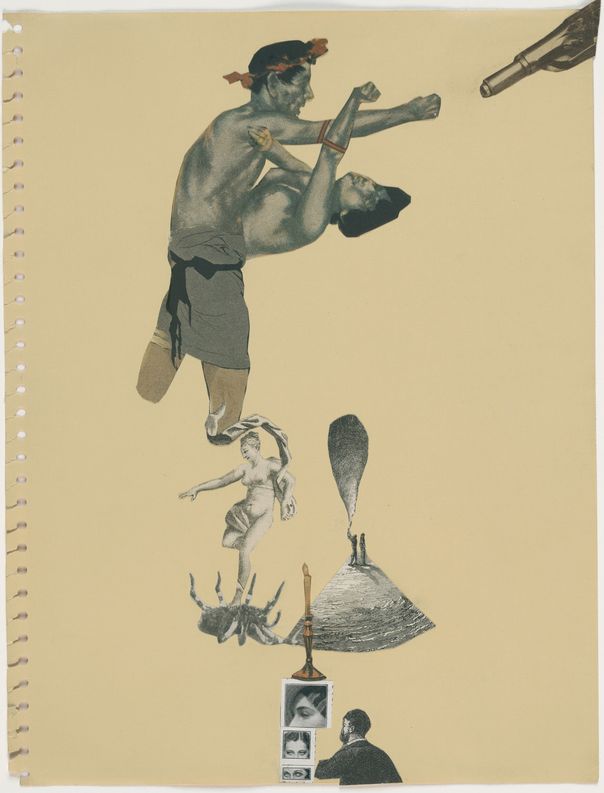
Esteban Francés, Remedios Varo, Oscar Domínguez, Marcel Jean, Cadavre Exquis, 1935, Museum of Modern Art, New York City, NY, USA.
During the Spanish Civil War and Franco’s authoritarian regime, Varo returned to France, this time with her partner Benjamin Péret, another Surrealist painter. They lived in Paris and Marseille. Her relationship with Péret opened the doors to the Surrealist group in Paris. Women were usually rejected and seen as femmes enfants (female children) and thus could not easily access these hermetic groups. Nevertheless, she overcame the prejudices and managed to become an actual group member. Varo participated in their publications and exhibitions like the Exposition Internationale du Surréalisme en la Galerie des Beaux-Arts. In Paris, Varo visited the Louvre Museum regularly and also engaged in esoterism.
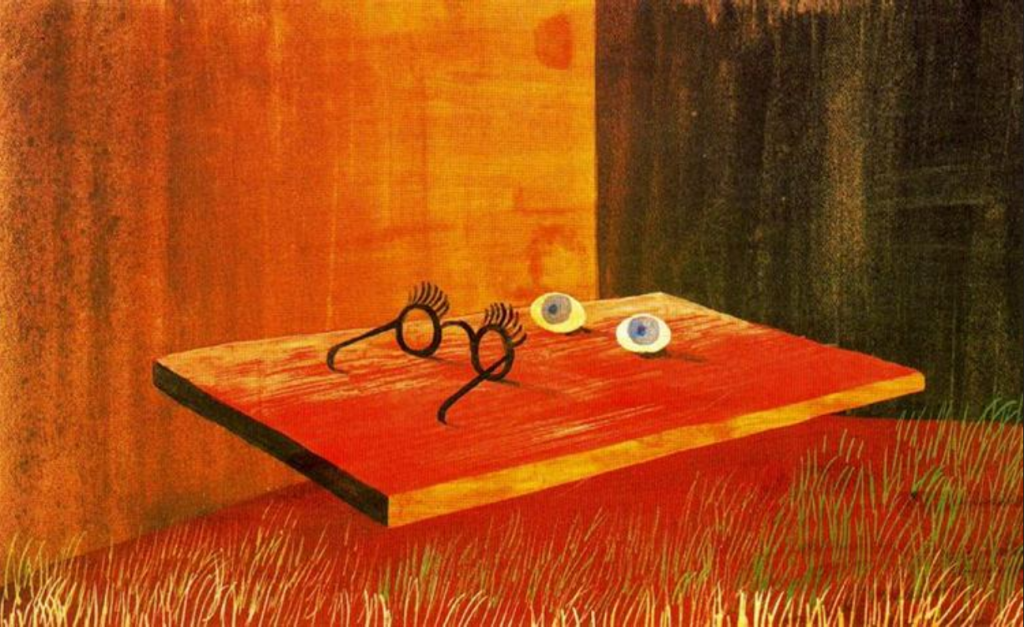
Remedios Varo, Eyes on the Table, 1938, private collection. WikiArt.
Another example of her experiments with techniques is The Soul of the Mountains made with the fumage technique. Essentially, she used the smoke from a candle to form figures. Once again, she played with the idea of randomness.
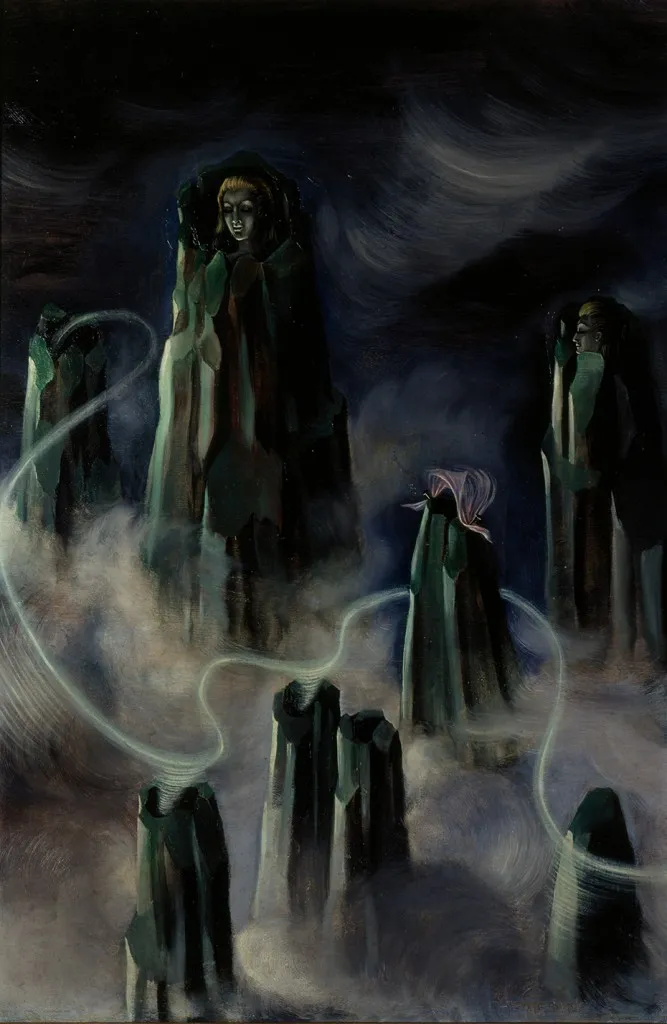
Remedios Varo, The Soul of the Mountains, 1938, Museo de Arte Moderno, Mexico City, Mexico.
Her years in France ended when the Nazis invaded. She and Péret were arrested, and after her release, she fled to Mexico in 1941.
Varo was one of the thousands of Spanish refugees that arrived in Mexico in the 1940s. And it was there that she produced her most famous works. She continued developing her style and focusing on Surrealist themes of dreams, magic, esoterism, the subconscious, mysticism, and more. These were not only reflected in her works, but in her daily life, too. For instance, she always had stones and crystals in her studio.
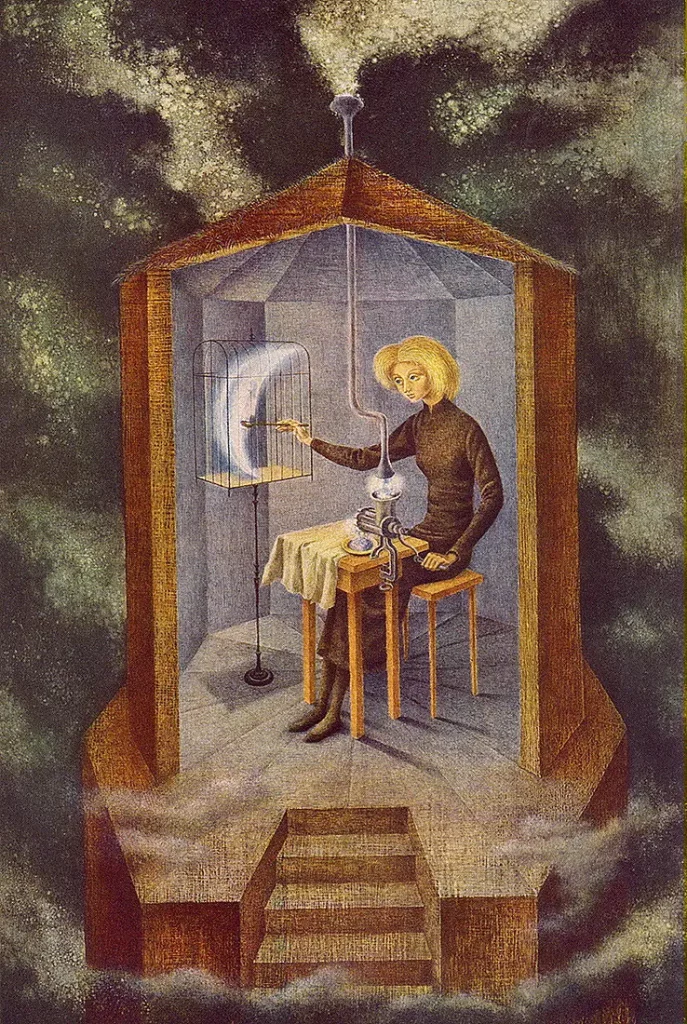
Remedios Varo, Star Porridge, 1958, FEMSA Collection, Mexico City, Mexico.
She started exhibiting in 1955 in the Diana Gallery in Mexico City, and a year later, she got her first solo exhibition.
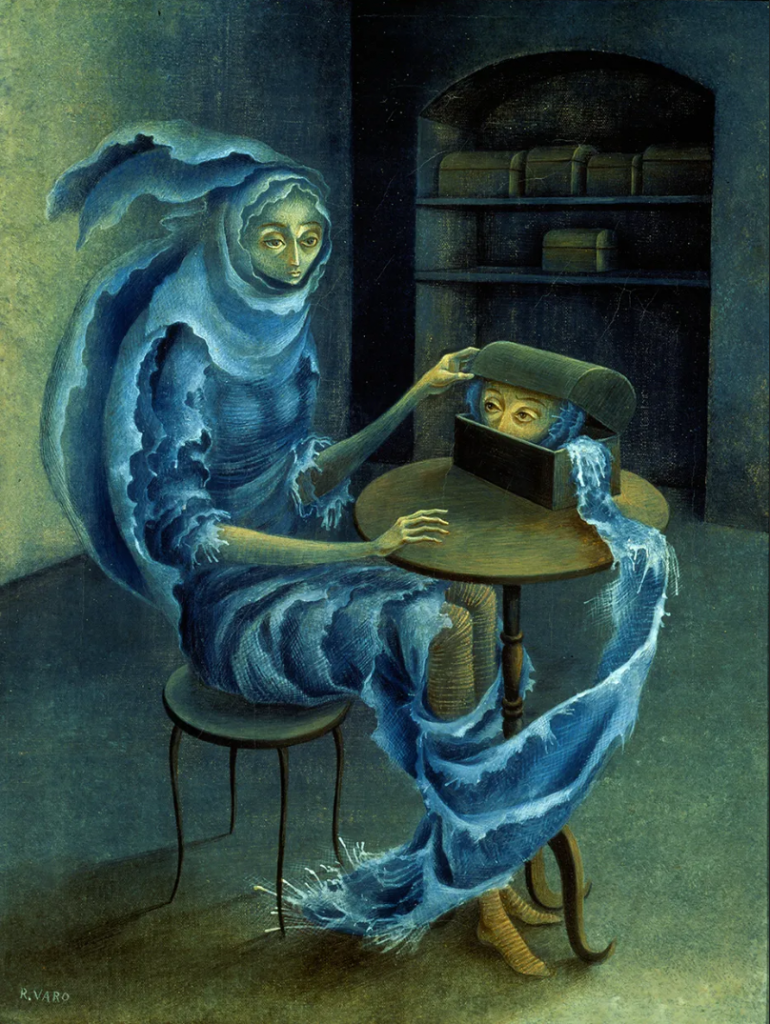
Remedios Varo, Encounter, 1959, private collection. Remedios-varo.com.
During her exile in Mexico, it is essential to talk about her friendship with English painter Leonora Carrington (1917-2011). They met in Paris but it was during the exile that they became true best friends. Indeed, both artists had similar interests that led them to join the Surrealists. Also, there are similarities in the art they created, while preserving their own styles and identity. Moreover, Carrington based one of the characters in The Hearing Trumpet on Varo. Not only did they share their art, but they also cooked, and spent time together outside the studio.
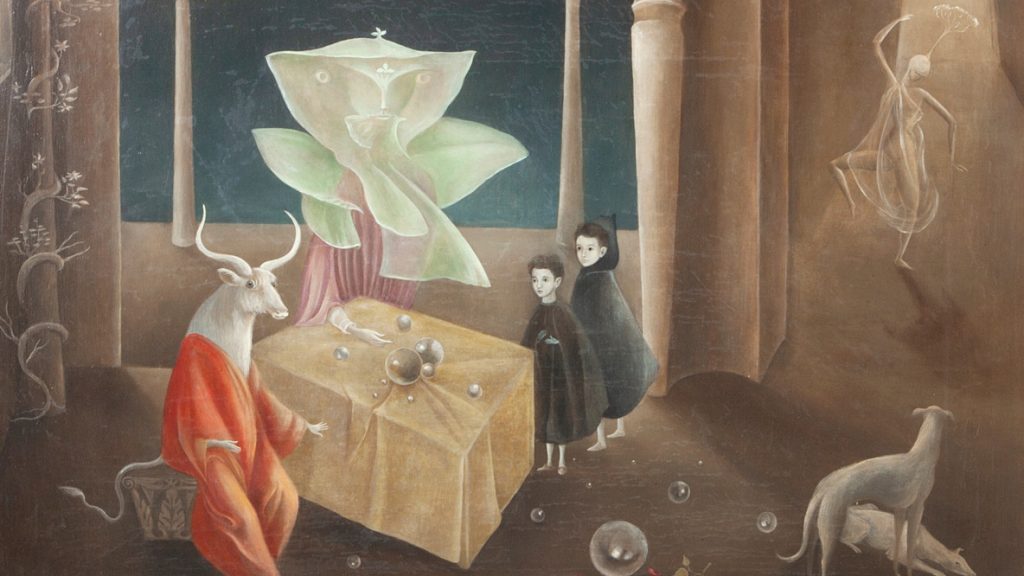
Leonora Carrington, And Then We Saw the Daughter of the Minotaur, 1953, Museum of Modern Art, New York City, NY, USA.
Another female friend of Varo was the photographer Kati Horna, a Hungarian-born photographer who took pictures of both painters. The photo below illustrates the close collaboration between these three artists.
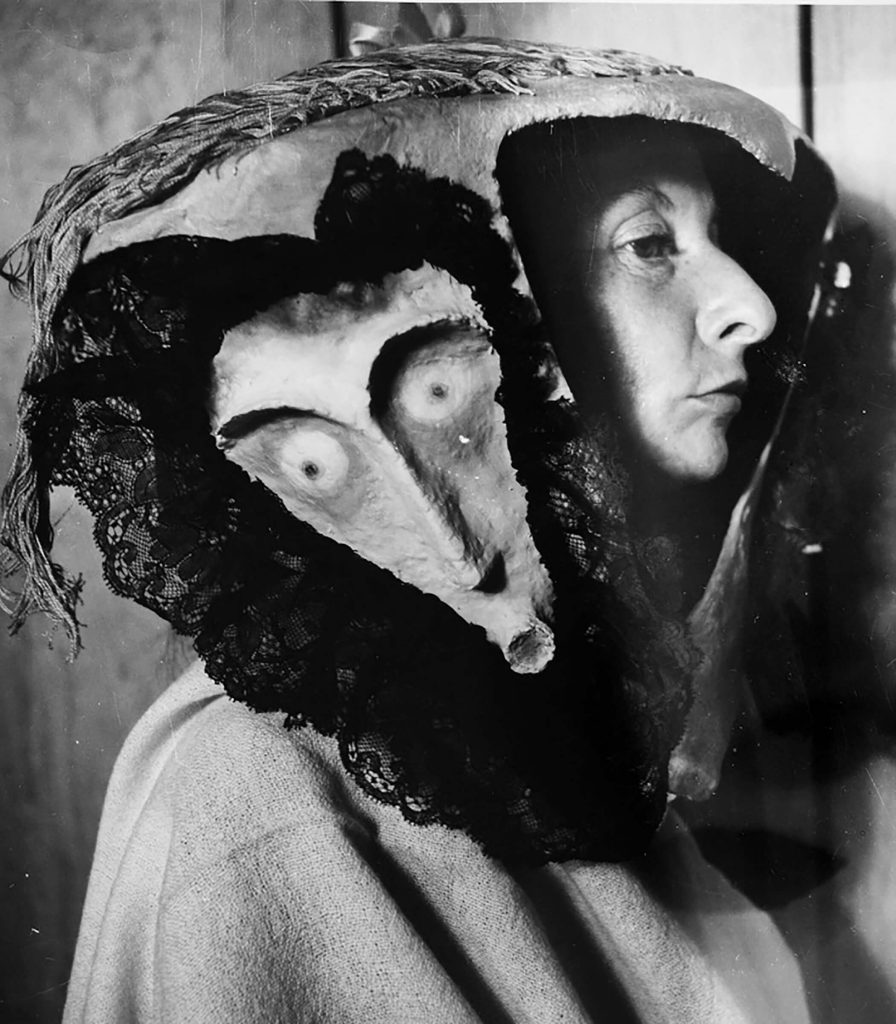
Kati Horna, Portrait of Remedios Varo wearing a mask by Leonora Carrington, 1957, Museo Amparo, Puebla, Mexico.
Unfortunately, Varo died prematurely in 1963, at the age of 55 in Mexico City. Her sudden death caused by a heart attack was a shock to Carrington and other friends. Thankfully, we still have her wonderful creations that, more than canvas, are a window into her own fantastical world.
María José González Madrid. “El ‘Arte Mágico Surrealista’ En La Obra de Remedios Varo,” Bulletin of Spanish Studies (2002), 2018 95, (5): 511–32.
Meghan Macius: Artist Friendships: Leonora Carrington and Remedios Varo. Accessed on 24 Nov. 2022.
Hannah Page: 5 Fast Facts: Remedios Varo. Accessed on 24 Nov. 2022.
Stefan van Raaij, Joanna. Moorhead, and Teresa. Arcq. Surreal Friends : Leonora Carrington, Remedios Varo and Kati Horna, Lund Humphries, 2010.
DailyArt Magazine needs your support. Every contribution, however big or small, is very valuable for our future. Thanks to it, we will be able to sustain and grow the Magazine. Thank you for your help!